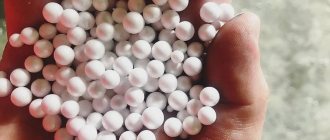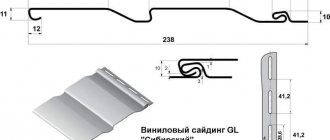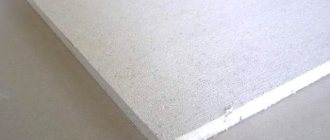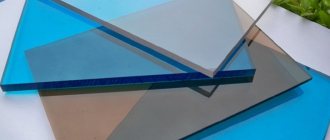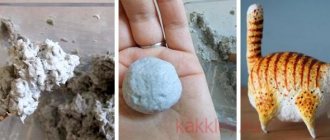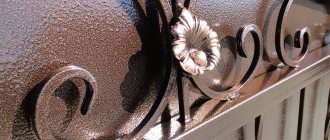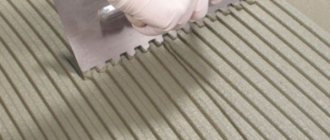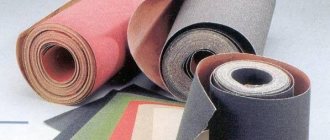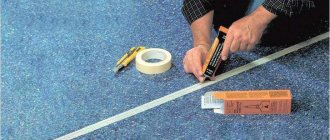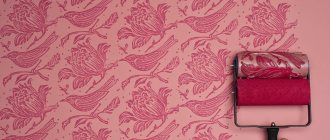The most inexpensive way to insulate and soundproof building structures is to finish with foam plastic boards. The material is also used for decoration in the form of tiles, baseboards and other elements. Often there is a need for precise adjustment, for which the slabs have to be cut. It is difficult to do it smoothly and without debris. Let's figure out how and what to cut polystyrene foam at home to get the best result.
Foam cutting
So, polystyrene foam, like any other material, needs to be processed before use. Initially, it is supplied in ordinary slabs with a certain thickness. However, the shape of the slabs is not always sufficient to use them wherever necessary.
Often the slab has to be cut into pieces, trimmed, and cleaned. Sometimes it becomes necessary to cut off a decorative part at the edge of the slab or make a certain angle.
There are actually a lot of options. But one question remains. How to cut foam? It would seem, why else invent some additional units, buy a special cutter for foam plastic if you can not only cut it, you can even break it with your own hands. And this is literally true.
Here we need to turn to the features of polystyrene foam itself and reinforced polystyrene foam for the facade. The foam itself consists of small polystyrene balls.
The initial raw material in it is a polymer that is mixed with foam fillers and air. The result is a fairly pliable and very light structure that can be easily cut or broken by hand.
READ How to cut plastic panels
But breaking the foam is not the best solution. your kink line will never be accurate. The polystyrene foam balls will distort it, making the final structure unsuitable for precision work.
However, we still note that it is very easy to break or cut foam. That is, cutting foam plastic at home is quite possible. Another question is how to do this accurately and with minimal destruction of the material. This is where a foam cutter or any homemade device will come in handy. to menu
Tool: shoe cutting tool
A shoe knife is sharp enough that its blade will go through plastic bubbles rather than catching them.
But there are still some notes on its operation:
- It is possible to cut only those sheets whose thickness does NOT exceed 40 mm;
- The blade dulls quite quickly, which is why it requires sharpening after passing approximately every 200 cm of foam blades. But this only matters for large volumes of work;
Always keep a whetstone handy when using a shoemaker's knife.
- As the blade passes through the foam, it rubs into the plastic bubbles with a terrible sound. So be prepared.
If you have a lot of foam plastic slabs waiting for you, which need to be cut with the described tool, then I recommend putting on headphones right away, otherwise by the end of the work you will be in a very bad mood.
Protecting your hearing and mental health
Knife cutting
When insulating a floor or ceiling using foam boards, it is not at all necessary to use special equipment.
To cut polystyrene foam at home you need to have:
- Nice knife.
- A ruler more than one meter long.
- Pencil.
The procedure for cutting polystyrene foam boards in this way is quite simple:
- First, on the surface of the material, the starting and ending points of the cutting line of the cut are marked with a pencil.
- Next, a ruler is applied to these marks, clamped, and an incision is carefully made along it with a paint knife (it is not necessary to completely cut off the piece of foam plastic).
- The polystyrene foam plate is turned over to the other side, and a cut is made in the same way, parallel to the cut already made.
- After making the cuts, you just need to break the foam along the mowing line.
This method of cutting material is the cheapest, quietest and fastest, and there is practically no debris after finishing the work. Be sure to check the sharpness of the knife before cutting foam.
Gluing the boards together
Penoplex slabs can be made of different hardness and thickness. These are the characteristics that must be taken into account when selecting the right adhesive.
It is especially important to choose a composition that will help connect the slabs together
When performing installation work, you may need to glue the foam boards together. For sheets of popular material, almost any composition can be used
It is important that the glue does not contain gasoline or acetone.
The procedure for installing penoplex on the facade of a house is as follows:
- Surface preparation. During preparation, the surface must be thoroughly cleaned. If there is old finishing material left on it, it must also be removed. The same steps apply to paintwork. To eliminate mold, special compounds must be used.
- Bonding insulation material to the wall. This work should begin by applying adhesive to the foam sheet in the center and along the edges. When glue is applied to the sheet, it can be leveled. While rotating the sheets, you need to apply a little pressure on the base. How correctly the slabs are installed should be checked using a building level.
- If there is excess adhesive, it must be removed. If cracks appear during the installation of foam sheets, it is necessary to fill them with specially cut pieces of material. The use of polyurethane foam is not recommended.
Sheets should be mounted in a checkerboard pattern
You should pay attention to several methods of installing penoplex:
- Insulation of room walls from the inside. The glue dries in such conditions for about 3 days. Then finishing work continues. Penoplex should be secured with dowels. One fastening element secures 2 plates at once. Dowels must be used on 4 sides, as well as in the center of the product.
- External cladding of the building. When choosing this technology, thermal insulation is carried out during the construction of the house. In this case, the thermal insulation of the building from the outside is carried out using a plaster or ventilated facade. In the latter case, there are much more possibilities for design finishing of the facade. Plaster facades allow less steam to pass through.
Such features of installing penoplex on the facade of a building should be learned before work begins. Gluing the boards together is quite simple if you choose the right adhesive composition.
How to treat foam plastic
Forum / Technologies / How to process foam plastic
How to cut polystyrene foam, penoplex,!!!) From the Steel Beetle!
Ask a question you are interested in on our forum without registration and you will quickly receive an answer and advice from our specialists and forum visitors! Why are we so sure of this? Because we pay them for it!
at 23:08 How can you treat foam plastic so that it ends up being hard to the touch and does not crumble or crumble? Also, the surface should be smooth and very glossy. What glue is used for polystyrene foam? homohilaris
at 7:21 If you just close the pores and tie the foam balls together so that they don’t crumble, then a thin layer of ordinary finishing putty for walls will do. But the surface turns out to be rough; after drying, it can be slightly sanded with fine-grained sandpaper. There is a more expensive option - plastikrit, that is, acrylic plaster. You cover the foam by hand and it immediately gives you a smooth surface, like matte plastic.
at 12:06 Nothing - this is if the foam is high density. Or even better – made using an extruder. Then you can simply paint it, I mean foam products, and not walls insulated with it. But often, to save money, they take what is cheaper with less density
at 0:35 Any, even dense foam plastic is hygroscopic. which means it is porous and all the paint is absorbed into it. You can use watercolors)))) Leonid_32
at 2:26 You can try it, and first experiment with water-based varnish. In theory, it should satisfy all your requirements. You can also go through several layers of varnish. Pavel S
Make your own foam cutter in 5 minutes.
at 8:56 Glue for foam plastic is used “Titanium” or “liquid nails”. and the paint (I looked on the forums) they say can only be painted with water emulsion and some acrylic-based paints.
Working with material
How to bend polystyrene foam
Expanded polystyrene has a longitudinal arrangement of fibers, so it bends differently along and across.
On the reverse side, with a blunt pencil (or any other similar tool), the material is slightly pressed 0.3-0.5 mm along the bend - the more often, the better: experimentally observed with a bend radius of 15 - 20 mm, "grooves" are made after 5 - 6 mm, with a radius of 10 - 12 mm, the step is reduced to 3 - 4 mm. Then the polystyrene foam is bent along the mandrel using a hair dryer; preheated over the stove; through a warm pipe.
Another variation of the above method:
- a simple assembly of hacksaw blades is used, so that the blades are folded according to the “head and feet” principle (you can also use any spacers between the blades); the depth of cut and the distance between the working blades are set; compressed in any way
- With this tool, a polystyrene foam plate is pressed or filed
- the surface of the material is covered with food foil
- On the mandrel, the material is bent using an iron, carefully ironing the foil. In this case, the temperature should be such that the outer layer of polystyrene foam under the foil softens and stretches. In this case, the inner side of the plate will be compressed along the cuts.
How to glue polystyrene foam
Expanded polystyrene should be glued with neutral adhesives that do not corrode the material itself.
Adhesives used for working with polystyrene foam:
- UHU Por
- UHU Kraft
- Taifun
- Titan-SM
- PVA
- Regent
- Uranium glue
- Nacet
- EDP
- Epoxy resin
- Polyurethane foam
You should also take into account the requirement for glue - that the properties of the adhesive seam correspond to the properties of the material being glued. There is only one way to glue foam without the resulting seam affecting workability. This is polyurethane foam. It has the same characteristics and adheres very well, even in high humidity. In this case, moisture is the catalyst. Foaming polyurethane adhesives for wood have similar properties.
> Links
- Polystyrene on Wikipedia
- Depron - Dutch company - the founder of XPS
- Penoplex - manufacturer of thermal insulation materials
How to use penoplex
Penoplex is extruded polystyrene foam. Only by taking into account the composition and chemical properties of this material can you choose an adhesive for its fastening. Among the variety of adhesive compositions, it is worth highlighting several of the most popular and effective:
- "Atlas Stopter K-20". This mixture is of high quality, so it is often chosen for gluing polystyrene foam boards. Glue is also used for restoration of facades. Used in the insulating layer, this glue also serves as reinforcement. This glue is resistant to low temperatures and moisture. Using this product allows you to save a lot of money.
- Atlas Plus. This adhesive mixture is universal in use. It can be used for both wall tiles and ceramics. Quite often this glue is used to attach penoplex. The main characteristics of this composition include high elasticity and good adhesion to the surface. When using this glue, work on wall finishing is carried out even on a wet surface.
- Mineral glue. Such compositions include “Sarmat”. having a reasonable price. It is quite often used to create various crafts.
- Polyurethane adhesive "Titan". which is able to perfectly cope with the purposes of installing penoplex on the facade. This glue has a higher price.
- Waterproofing compounds. similar to Uniflex. widely used for installation of polystyrene foam boards. Such compositions also include bitumen mastic.
- Glue "Moment" and "Emphikol". They belong to polymer composite compositions. They are also quite often used for working with penoplex.
When choosing a specific adhesive for installing penoplex, it is necessary to take into account that the composition should not contain the following substances:
- toluene or benzene;
- formaldehyde and formaldehyde;
- gasoline, diesel fuel and kerosene;
- resins and solvents.
READ Laptop Power Supply For Screwdriver
Knowledge of such means will allow you to figure out how to glue penoplex .
Staining procedure
If there are doubts about the color and adhesion of the composition to the surface, a small test should be carried out. The purchased composition must be applied to a small part of the polystyrene foam sheet and left for two days. Then you should evaluate the result. If the effect is positive, coloring work can begin. Otherwise, the paint will have to be replaced.
When finishing penoplex inside a room, the composition being painted is decorative. The material is thus protected from moisture. Before painting the surface, you should make sure that it is clean and free of greasy stains. When cleaning the surface, make sure that the rag does not leave lint. If there is a large amount of dirt, penoplex is quite easy to wash with warm water.
Paint is applied to penoplex only after the material has been thoroughly dried. In addition, it is applied in layers. They shouldn't be thick. To prevent streaks, it is necessary to work with the tool in one plane. Be sure to wait until the first layer has completely dried before applying the second. Penoplex is not able to absorb paint, so after applying the first layer you should take a closer look - is a second one needed? A good emulsion composition is suitable for painting the surface of penoplex.
- Composition and proportions of mortar for bricklaying
- How to make colored brick mortar
- Size and weight of white sand-lime brick
- Silicate facing brick
What and how to cut foam plastic
In order to cut a specific shape of insulation, any device for cutting foam plastic can be used:
- knife;
- hacksaw for wood or metal;
- soldering iron;
- an angle grinder called a “grinder”;
- thin metal wire like a string;
- thermal cutter;
- foam cutting machine;
- jigsaw with heated file.
If you choose a hacksaw for wood, then its teeth should be as small as possible. All tools that are not heated to a certain temperature do not guarantee that the foam will not crumble. Such tools are used for small volumes of work, but when it is necessary to insulate all the enclosing structures of a house, it is better to use a foam cutting machine, the action of which is based on heating the cutting element.
Selection of nichrome wire
Nichrome wire is not much different in appearance from steel wire, but it is made from an alloy of chromium and nickel. The most common wire is X20N80, containing 20% chromium and 80% nickel. However, unlike steel or copper wire, nichrome wire has a higher resistivity and can withstand heating temperatures up to 1200˚C while maintaining high mechanical strength. Nichrome wire is available in diameters from 0.1 mm to 10 mm.
Nichrome wire is widely used as heating elements in household and industrial products, such as electric hair dryers, irons, electric stoves, radiant heaters, soldering irons, water heaters and even electric kettles. And this is not a complete list. The so-called heating elements type heaters are also made of nichrome wire, only the spiral is placed in a metal tube, which is filled with quartz sand to insulate and transfer heat from the spiral to the walls of the tube. It’s not by chance that I gave a list of devices; it’s just that you can take nichrome wire from a failed heating element to make a machine, of course, if it hasn’t burned out due to long work.
Cutting polystyrene foam on a machine involves melting it along the passage line of heated nichrome wire. The melting point of polystyrene foam is about 270˚C. In order for the foam to melt upon contact with the wire, its temperature must be several times higher, since the heat will be spent not only on melting, but also due to thermal conductivity will be absorbed by the foam itself, reducing the temperature of the wire. The amount of heat absorbed by the foam will directly depend on its density. The denser the foam, the more thermal energy required.
From the above it follows that, depending on the density of the foam, for cutting it it is necessary to select a wire of the appropriate diameter so that the nichrome wire does not melt from the heat generated on it. The higher the density of the foam, the larger the diameter of the nichrome wire. It is worth noting that a cutter on which a wire is installed for cutting dense foam plastic will successfully cut loose foam plastic, but it will only need to be advanced faster.
The length of the nichrome wire for the cutter is selected based on the size of the foam plates intended for cutting, and does not depend on the density of the foam.
As a result of the conducted experiments, it was determined that for effective cutting of foam plastic, the power that must be supplied per unit length of wire should be in the range of 1.5-2.5 W per centimeter of wire length; for this operating mode, nichrome wire with a diameter of 0 is best suited .5-0.8 mm. It allows you to generate enough heat to quickly cut foam of any density, while maintaining its mechanical strength. Therefore, nichrome wire with a diameter of 0.8 mm was used to make a foam cutting machine.
Foam cutting machine
Expanded polystyrene is a good insulation material, an excellent raw material for various decorative elements, which you can make yourself. For decorative cutting of foam plastic, you will need a specialized machine. There are many options for such equipment, it all depends on the intended design of the product.
Cutting the material can be done using a tungsten filament. It should be noted that this thread is hot, but its temperature can be adjusted. In addition to polystyrene foam, you can cut other materials with this thread. This is especially true in the manufacture of various components intended for stucco.
The required stencil is applied to the expanded polystyrene plate, and an object is created using a tungsten filament. This procedure is not difficult and does not take much time.
You can also use a construction blade or cutter for the equipment. The design of the machines may differ, but the principle of operation remains the same - the use of a tungsten filament, which is connected to the electrical network. Using such a device, you can independently produce decorative elements from polystyrene foam of any configuration.
To perform cutting, it is recommended to purchase the following tool:
If you assemble the cutting machine correctly, there will be no difficulties during the work process. The main thing is to use a high-quality tool, show maximum diligence and care. And to perform such work, you do not need to contact experienced craftsmen.
Sources:
https://gidpotolok.ru/info/kak-razrezat-penopleks-vdol/
Large voluminous figures
If you want to make a large figure that takes up impressive dimensions, we recommend that you use polyurethane foam and a frame so as not to use a lot of foam.
This approach will allow you not only to make a large, voluminous figure, but also to make it strong and wind-resistant. Making such crafts from foam plastic with your own hands is always fun and interesting, and later they look very beautiful on the site.
Detailed master classes on crafts made from foam plastic will help you understand manufacturing technology. There is nothing complicated here, but the right technique will help the product last for many years and not deteriorate at all.
Using a hand saw
Cutting a foam board with a thickness greater than 50 mm using a knife will be very difficult and ineffective. If you use an electric jigsaw, there will be a lot of debris, and the cut line will not be smooth. Therefore, the best option for cutting polystyrene foam up to 10 cm thick at home is with a hand saw.
To carry out the work, it is recommended to purchase a wood saw with a length that will allow you to cut material 50-100 mm thick.
Tool: hacksaw
Hello, a hacksaw suitable for the implementation of the plan
How to cut polystyrene foam at home if its thickness exceeds 40 mm? The simplest answer in this case: a hacksaw. But I’ll immediately note that this tool is NOT universal, as it is only suitable for creating straight edges.
Try to look for dust with the thinnest teeth, as they are less likely to catch plastic vessels when passing between them, which as a result has a beneficial effect on the quality of the cut.
Areas of application of polystyrene foam...
...are not limited to the construction and repair area. Foam boards and sheets are widely used in the following areas of human activity:
- In medicine – cases for equipment, packaging for glass and sharp objects;
- In the organization of active leisure - inserts in life jackets, contents of buoys, floats;
- Repair of refrigeration and air conditioning equipment;
- In shipbuilding, as an unsinkable filler for compartments on small vessels (boats, boats);
- For design purposes, construction and modeling.
So, the question of how to cut polystyrene foam is relevant not only for soundproofing the roof of a house or thermal protection of walls. You can use it to make a model of a boat, build protection for the refrigeration circuit in an air conditioner, or make a decorative figurine of a unique design. The light weight and affordability of the material should not be misleading about the simplicity of its mechanical processing - cutting foam plastic has a number of its own secrets and tricks.
see also
Comments 64
There are no drawings or drawings, but this is most likely a foam cutter.
Hello. you take a sheet of plywood to size and put wooden beams in them, two iron pins to one + to the other - from the welding inverter between + and - nichrome wire. you set everything up as needed and cut it.
Look at my blog, the link is not inserted. I made a cutter like this.
I had a broken blade from a kitchen year, an ordinary stainless steel one. I sharpened the shank and inserted it into a jigsaw, it cuts amazingly and quickly.
I sewed up the entire ceiling without any debris from cutting the foam.
Hooked it up to an ancient but eternal charger inherited from my dad
Damn! I have the same one and my father gave it to me too! It works like a charm, but the current regulator has started to act up... if I take it apart, I’m afraid I won’t be able to find a replacement rheostat.
I whipped up something like this
An ordinary knife, or even more so a stationery knife, is very inconvenient when cutting EPS with a thickness of more than 30 mm (the blade jams). I cut the EPS with a homemade knife made from a regular metal cutting blade. I sharpened it and left teeth on the blade (serial sharpening). Inserted the sharpened blade into the handle of the hand saw.
You don’t have to try too hard to cut the EPS very evenly - anyway, then fill all the joints with foam to seal it.
An electric fishing saw and a file sharpened like a knife.
Cuts beautifully with a utility knife
I sawed with a hacksaw, and then the logs still foamed. But it is better to cut with a nichrome spiral.
I made such a thing for myself, it cuts foam plastic with a bang, the most important thing is that it’s smooth and the edge doesn’t crumble. Table size 1.5x1.2m. The cut is adjusted with self-tapping screws, moving the spiral up or down along the block; it is better to attach the spiral to the block through a washer to which the wire is attached.
Thanks for the diagram
You take nichrome and connect it to a welding machine. Don't push too hard with the ampere, it will burn out quickly. I took nichrome from an old ballast restat. Using this method, I opened 100 at an angle to insulate the base, and ebb on top. Happy cutting!
